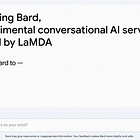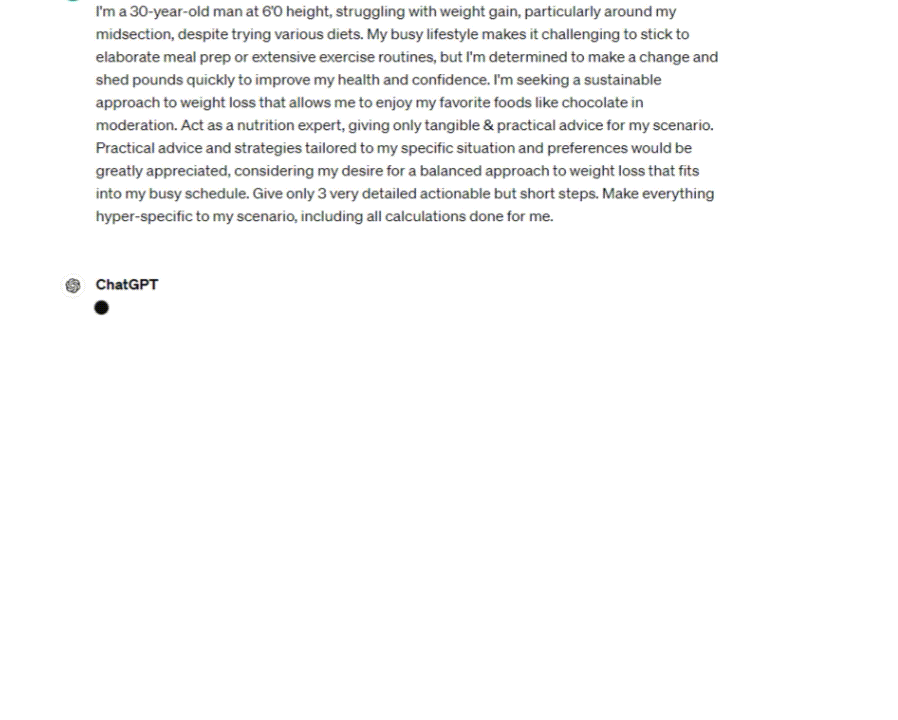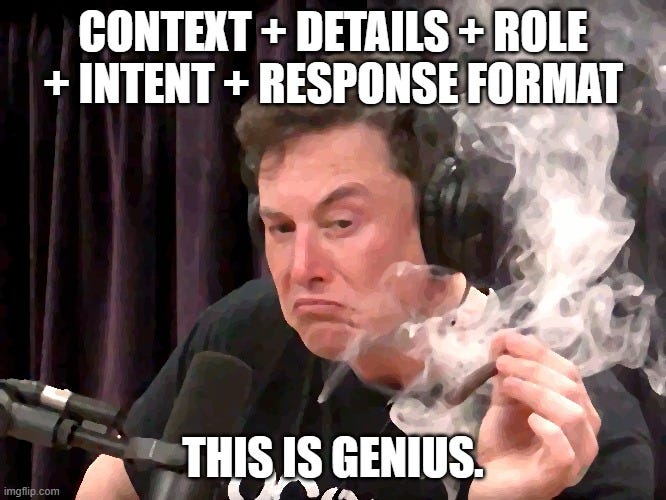Prompt Engineering Is Easy
Anyone Can Write Better Prompts in 5 Minutes With This Formula
Hey Creators! 👋
Ever wondered why some seem to get more out of ChatGPT & Claude than you? Maybe you’ve even noticed that AI responses are getting worse, and thought “Is Sam Altman up to something here?” or “Did Claude get nerfed again?”
The “secret” in using AI to its fullest potential lies in not just asking the right questions, but engineering them in a specific way. Most of the guides you can find online are mediocre at best and only give surface-level knowledge, so in today’s post, we’ll be:
Breaking the myth of “Prompt Engineering” being difficult
Showcasing Good vs Bad Prompt Outputs
Revealing the simple formula for writing excellent prompts
3 plug-and-play prompts that will make your life easier
Do you have a minute to participate in our Subscription Giveaway and make our newsletter even better? Take a quick survey and tell us about your experience & participate in the free Giveaway of a Premium Subscription for 6 months.
The Myth of Prompt “Engineering”
At their core, AI like ChatGPT and Claude are a lot like us — they use language to communicate, think, and process information, often creating narratives and using structured logic similar to ours.
This is why prompt engineering is less about deep technical skills and more about using language effectively and understanding basic human psychology – meaning anyone could get good at it, and you don’t need a fancy degree in tech!
When you craft a prompt, you're guiding the AI through a thought process, similar to explaining a complex idea to a friend. The clearer & more direct your explanation, the better the AI understands and responds.
And if you want to learn on a less fundamental & more advanced level on how AI really works, you can check out our post here, explaining LLMs simply:
Prompt Engineering – Before & After
Just to show you the difference between good & bad prompt engineering, here’s what a simple question from ChatGPT gets you. Let’s take weight loss (without giving up chocolate), for example:
What even is that answer? It has no clear actionable steps to take, no plan of action, and hasn’t anyone trying to lose weight heard of those generic tips before?
Here’s what a specific & clear, context-based prompt, following a specific formula can get you:
As you can see, the output was extremely specific and much more valuable than the former response, it even did complex calculations! Just like you would consult with a real expert – you want to be as specific as possible with your current situation, so that you get you can get a proper, educated response.
You may think that overcommunicating is the key insight here, but it’s actually far from that – the prompt above followed a very specific formula that made ChatGPT respond in such a valuable way.
P.S – The special prompt formula works with any AI, be it ChatGPT, Claude, it could even make Elon’s Grok more useful! All AI depends on your input, so the formula is universally applicable.
We won’t leave you waiting any longer, here’s the only formula you need to write excellent prompts that make AI give you answers that can actually help you.
Also — check out our post on another new prompt engineering technique - Program Simulation, where we dive deeper into the more technical side of prompt engineering here:"
The Only Prompt Formula You Need
Context + Details + Role + Intent + Response Format = Golden PromptThe above prompt formula is golden, each part of it is essential for the AI to do its job to the fullest (without going into technical details).
Now, this formula alone won’t get you results without knowing what each element of it does. Let’s dissect it to understand why each part is important & how it helps AI better understand our queries:









